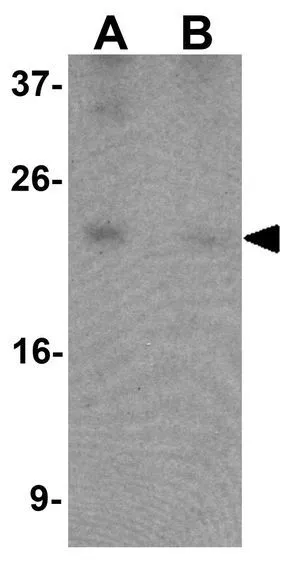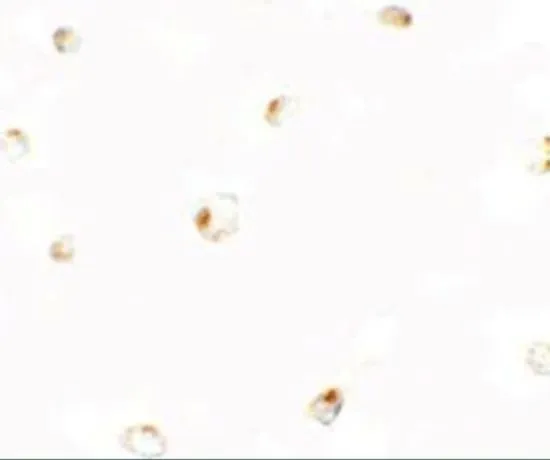
WB analysis of 293 cell lysate in (A) the absence and (B) the presence of blocking peptide using GTX32055 B9D1 antibody. Working concentration : 1 microg/ml
B9D1 antibody
GTX32055
ApplicationsImmunoFluorescence, Western Blot, ELISA, ImmunoCytoChemistry
Product group Antibodies
ReactivityHuman
TargetB9D1
Overview
- SupplierGeneTex
- Product NameB9D1 antibody
- Delivery Days Customer9
- Antibody SpecificityAt least two isoforms of B9D1 are known to exist; this antibody will only recognize the longest isoform. B9D1 antibody is predicted to not cross-react with other DNAJC family members.
- Application Supplier NoteWB: 1 microg/mL. ICC/IF: 5 microg/mL. *Optimal dilutions/concentrations should be determined by the researcher.Not tested in other applications.
- ApplicationsImmunoFluorescence, Western Blot, ELISA, ImmunoCytoChemistry
- CertificationResearch Use Only
- ClonalityPolyclonal
- Concentration1 mg/ml
- ConjugateUnconjugated
- Gene ID27077
- Target nameB9D1
- Target descriptionB9 domain containing 1
- Target synonymsB9; B9 domain-containing protein 1; B9 protein domain 1; endothelial precursor protein B9; EPPB9; JBTS27; MKS1-related protein 1; MKS9; MKSR1; MKSR-1
- HostRabbit
- IsotypeIgG
- Protein IDQ9UPM9
- Protein NameB9 domain-containing protein 1
- Scientific DescriptionThis gene encodes a B9 domain-containing protein, one of several that are involved in ciliogenesis. Alterations in expression of this gene have been found in a family with Meckel syndrome. Meckel syndrome has been associated with at least six different genes. This gene is located within the Smith-Magenis syndrome region on chromosome 17. Three alternatively spliced transcript variants that encode different proteins have been described for this gene. [provided by RefSeq, Aug 2011]
- ReactivityHuman
- Storage Instruction-20°C or -80°C,2°C to 8°C
- UNSPSC12352203


